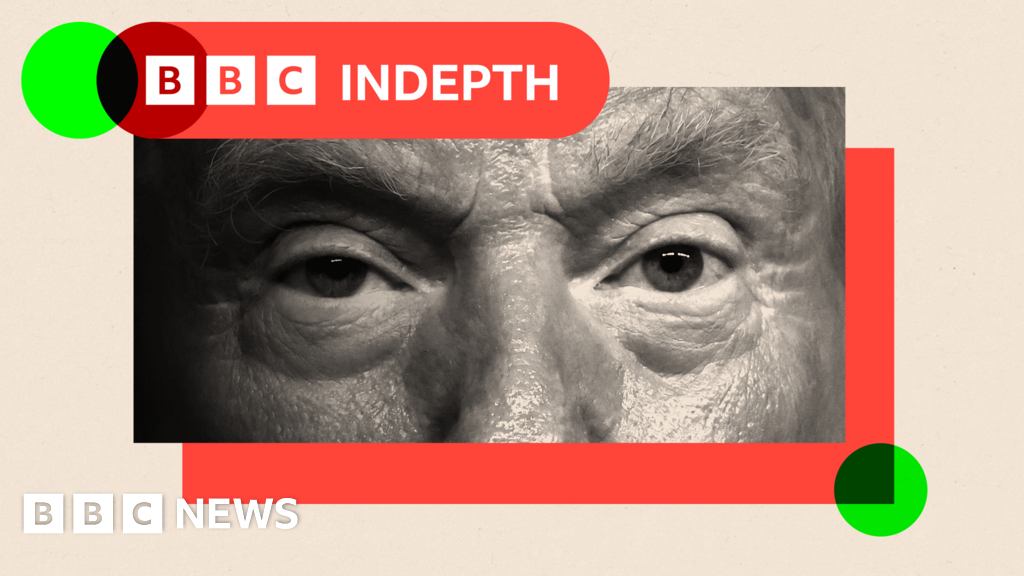Key Takeaways
- The Markets in Crypto-Assets (MiCA) regulation is a significant driver of change in the European stablecoin market.
- It requires full transparency, reserve backing, and EU regulatory approval for stablecoins.
- As the EU’s MiCA regulations take effect, exchanges in Europe are delisting Tether (USDt) and other non-compliant stablecoins.
- As a result, Euro-backed stablecoins are gaining traction. USDC remains a strong USD alternative.
The European stablecoin market is changing as major exchanges remove Tether to comply with Markets in Crypto-Assets Regulation (MiCA ) regulations.
According to recent research , the regulation categorizes stablecoins based on whether they are designed to maintain a stable value relative to other assets.
Stricter rules on reserve backing, transparency, and regulatory approval push non-compliant stablecoins out of Europe.
As Tether (USDt) and other non-compliant stablecoins face delisting, users seek MiCA-compliant alternatives that meet the European Union’s strict financial rules.
This article highlights stablecoins that align with MiCA regulations, offering users secure options for digital payments, trading, and settlements.
With MiCA reshaping the market, only compliant stablecoins will remain available in Europe.
What Are the MiCA-Compliant Stablecoins?
Any stablecoin operating in Europe must comply with MiCA’s requirements or face being delisted on exchanges. Compliance requirements include:
- Stablecoins must have full reserve backing: MiCA requires stablecoins to be backed one-to-one with highly liquid assets such as cash or short-term government bonds. Issuers must hold these reserves separately from company funds, ensuring users can redeem their stablecoins anytime. Regular audits confirm that reserves match the circulating supply.
- Regulators demand full transparency: Stablecoin issuers must report their reserves and financial status to regulators. Clear disclosure prevents hidden risks and builds trust. Any major changes in backing or liquidity must be reported immediately, keeping users informed about the stability of their assets.
- Approval from European regulators is required: MiCA does not allow stablecoins to operate in Europe without approval. Issuers must work with a licensed financial institution and follow strict financial and security rules. Stablecoins that do not meet these standards cannot be offered to users or listed on European exchanges.
- Non-compliant stablecoins face delisting: Stablecoins that do not follow MiCA rules face removal from exchanges and restricted use. Payment providers and platforms will not support them, limiting their availability. As a result, users and businesses are shifting toward options compliant with MiCA.
But what are the suitable options that follow MiCA regulations? The next alternatives ensure continued access to stable digital payments within the European market and therefore can be considered suitable options to USDt.
MiCA Compliant Stablecoin Alternatives To Watch
As of March 2025, 10 firms have been authorized to issue 15 stablecoins, classified as e-money tokens under EU law.
Patrick Hansen, Senior Director, EU Strategy & Policy at Circle announced the latest developments on X.
Euro-Pegged Stablecoins
Below are 10 notable euro-pegged stablecoins following MiCa’s framework:
- EURC – Issued by Circle
- EURCV (Euro CoinVertible) – Issued by Societe Generale–FORGE
- EURI – Issued by Banking Circle
- EUROe – Issued by Membrane Finance
- EURQ – Issued by Quantoz Payments
- EURD – Issued by Quantoz Payments (Algorand implementation)
- EURØP – Issued by Schuman Financial
- ENEUR – Issued by Fiat Republic
- EURR – Issued by StablR
- EURSM – Issued by Stable Mint
U.S. Dollar-Pegged Stablecoins
Additionally, there are 5 dollar-pegged stablecoins following MiCa’s regulations:
- USDC – Issued by Circle
- USD1 – Issued by Crypto.com & 1S1C
- eUSD – Issued by Membrane Finance
- USDQ – Issued by Quantoz Payments
- USDR – Issued by StablR
Key Features and Regulatory Compliance of Alternative Stablecoins for European Users
Below is a list of some of the most widely used MiCA-compliant stablecoins and their key features.
EURC
Circle issues EURC (formerly EUROC) with one-to-one euro reserves held in regulated financial institutions. EURC meets MiCA rules by ensuring financial stability, full transparency, and secure reserves. Users can redeem it anytime, making it a strong option for EU digital payments.
EUR (EURCV)
Societe Generale created EUR CoinVertible (EURCV) to provide a regulated stablecoin backed by euros for digital transactions. Unlike other stablecoins, EURCV connects directly to the banking system, offering a compliant option for European users.
Societe Generale FORGE issues EURCV. As a fully collateralized stablecoin, EURCV follows MiCA rules, with reserves held within Societe Generale Group, one of France’s largest banks.
EURCV is one of the few stablecoins issued by a major European bank. It meets strict financial rules, ensuring full regulatory approval and institutional security. This makes it a reliable choice for corporate settlements, on-chain transactions, and euro-backed digital payments.

USDC
Circle designed USDC as a fully backed and transparent digital dollar. Under MiCA, USDC meets strict financial and reporting rules, making it a reliable option for transactions conducted in US dollars within Europe.
Circle actively works with European regulators to ensure USDC aligns with MiCA’s changing rules. Circle reinforces its commitment to financial stability, transparency, and compliance by maintaining one-to-one reserves and conducting regular audits.
USDC continues to gain traction among businesses, payment providers, and financial institutions in Europe. This means that many companies integrate USDC into remittances, cross-border payments, and digital transactions, recognizing its stability and compliance under MiCA.
Unlike some stablecoins, USDC is compatible with multiple blockchains, making it an essential tool in Web3. Its ability to operate across different networks increases its usability for decentralized applications (DApps), decentralized finance (DeFi) platforms, and cross-chain transactions.

EURITE (EURI)
Banking Circle created Eurite (EURI) as a regulated euro-backed stablecoin for digital payments. EURI also follows MiCA rules and maintains one-to-one reserves in segregated accounts to ensure stability and security.
EURI works across multiple blockchains, including Ethereum (ERC-20) and BNB Smart Chain (Bep-20), allowing for fast payments, DeFi transactions, and business settlements. Its MiCA approval ensures transparency, financial oversight, and user protection.
EURI is a secure and compliant stablecoin for cross-border payments, decentralized finance, and digital asset settlements. Its listing on major exchanges, including Binance, increases its accessibility for users in the European market.

EURC vs. EURCV vs. EURI vs. USDC: Key Differences
This table outlines key MiCA-compliant stablecoins and their primary functions in the digital economy. Each stablecoin differs in reserves, compliance status, and intended use.
| Stablecoin | Reserve assets | MiCA compliance status | Issuing entity | Key advantage | Primary use case |
| EURC | Euro, regulated banks | Compliant | Circle | Transparency | EU transactions |
| EURCV | Bank deposits | Approved | Societe Generale | Bank integration | Institutional |
| EURI | Euro, cash reserves | Compliant | Banking Circle S.A. | Bank-issued | Payments, remittances, DeFi |
| USDC | USD, fiat reserves | Compliant | Circle | Wide adoption | Global transactions |
New MiCA-Compliant Stablecoins to Watch in 2025
The European stablecoin market is expanding as more issuers meet MiCA’s strict requirements. While some stablecoins offer strong regulatory backing and institutional support, others are newer or have smaller adoption than established options.
Still, they remain compliant under MiCA and provide additional choices for digital payments, business transactions, and on-chain settlements in Europe.
- USD1 – Crypto.com’s Coin: Crypto.com, in partnership with 1S1C, launched USD1, a MiCA-compliant USD-backed stablecoin. It maintains one-to-one fiat reserves in regulated financial institutions, ensuring transparency and stability for users in Europe.
- EURS – Stasis: Stasis issues EURS, a MiCA-compliant euro stablecoin backed by fiat reserves in European banks. Regular audits confirm its backing, ensuring it meets MiCA’s transparency requirements. EURS has been one of the longest-running euro stablecoins, making it a trusted option for regulated digital transactions in Europe.
- ENEUR: Fiat Republic introduced ENEUR, a MiCA-compliant euro-backed stablecoin designed for business payments and digital transactions. With full regulatory approval, it offers a secure alternative for euro-denominated transactions.
- EUROe and eUSD: Membrane Finance issues EUROe and eUSD, two MiCA-compliant stablecoins backed by euro and U.S. dollar reserves. These stablecoins ensure regulated and stable digital transactions for users across the European market.
- EURQ, EURD & USDQ: Quantoz Payments, a Dutch electronic money institution (EMI), issues EURD, a euro-backed stablecoin operating on the Algorand blockchain. In addition to EURD, Quantoz Payments has launched EURQ and USDQ, stablecoins pegged to the euro and U.S. dollar, respectively. These tokens are designed for secure digital payments and trading and ensure compliance with European financial regulations.
- EURØP: Schuman Financial introduced EURØP, a MiCA-approved euro stablecoin created for on-chain transactions and financial settlements. It meets MiCA’s transparency and reserve requirements, making it a strong option for European users.
- EURR & USDR: StablR Ltd. issued EURR and USDR, stablecoins backed by fiat reserves and approved under MiCA regulations. They provide a secure and compliant option for users looking for regulated digital assets.
- EURSM: Stable Mint’s EURSM follows MiCA’s financial and transparency requirements, ensuring it remains a compliant option for euro-denominated transactions and digital settlements.
As MiCA reshapes the stablecoin market, more financial institutions are working to launch compliant digital assets. Regulated stablecoins are becoming the standard, ensuring secure and transparent digital payments across Europe.
Which Crypto Exchanges Are MiCA Compliant?
As of March 17, 2025, several cryptocurrency exchanges have achieved compliance with the European Union’s MiCA regulation, enabling them to operate within the EU market under a unified regulatory framework. Notable exchanges include:
- OKX: On February 18, 2025, OKX secured a MiCA license, allowing it to offer services across all 28 European Economic Area (EEA) countries.
- Crypto.com: On January 17, 2025, Crypto.com became the first cryptocurrency exchange worldwide to obtain a MiCA license, facilitating its operations within the EU.
- Binance: Binance has updated its crypto transfer rules in Poland to align with MiCA’s stringent requirements, focusing on anti-money laundering standards and market integrity safeguards.
It’s important to note that while these exchanges have obtained MiCA licenses, the regulatory landscape is continually evolving. Additionally, as of early 2025, only 18% of crypto exchanges in the EU fully meet MiCA’s anti-money laundering (AML) and transparency standards, highlighting the ongoing efforts within the industry to achieve compliance.
Does MiCA Apply in the UK?
MiCA is a regulatory framework introduced by the EU to regulate the cryptocurrency market, providing clear guidelines for the issuance and trading of crypto assets, including stablecoins. However, since the UK is no longer part of the EU following Brexit, MiCA does not automatically apply within the UK.
Instead, the UK has developed its own regulatory approach to crypto assets. The Financial Conduct Authority (FCA) is the primary regulatory body overseeing crypto-related activities in the UK. The FCA has implemented regulations to ensure AML and counter-terrorism financing (CTF) compliance for crypto firms operating in the country, but these are separate from MiCA’s specific rules.
That said, UK-based firms involved in crypto assets or stablecoins may be indirectly impacted by MiCA if they operate in the EU or plan to offer services within the EU market. For instance, UK firms may need to ensure that their operations align with MiCA’s requirements if they wish to expand into European markets or deal with EU customers.
The Future of MiCA-Compliant Stablecoins
MiCA is changing the European stablecoin market, setting clear rules for reserve backing, transparency, and approval. Exchanges must remove non-compliant stablecoins, reducing options for users who depend on them for digital payments and trading.
Issuers are adapting by launching stablecoins backed by regulated banks and financial institutions. Stablecoins like those covered in this article aim to fill the gap left by non-compliant options, keeping secure digital assets available for users in Europe.
It is important to note that the list of approved stablecoins is not final. As the market grows, financial institutions and crypto projects are working to issue new MiCA-compliant stablecoins. Users and businesses will see more choices as stable digital assets become a bigger part of Europe’s financial system.
Conclusion
Mica is shaping the future of stablecoins in Europe, setting strict rules on reserve backing, transparency, and regulatory approval. Users turn to options meeting MiCA’s standards as major exchanges remove non-compliant stablecoins. Stablecoins like EURC, EURCV, EURS, USDC, and EURI offer a secure and compliant way to transact in digital euros and dollars.
The emergence of regulated stablecoins from banks and financial institutions shows the growing role of crypto in mainstream finance. More MiCA-compliant stablecoins will likely enter the market, giving users better choices for digital payments, DeFi, and cross-border transactions. With clear regulations, stablecoins are set to become a key part of Europe’s financial system.
FAQs
Can stablecoins be used for business payments under MiCA?
Yes, MiCA-compliant stablecoins are approved for business transactions, including corporate settlements and international payments, as long as they meet reserve and transparency requirements.
Will more banks issue their own stablecoins?
As demand for regulated digital assets grows, more banks and financial institutions may introduce MiCA-compliant stablecoins, expanding users’ choices.
Does MiCA affect stablecoins issued outside of Europe?
Any stablecoin used in Europe must comply with MiCA, even if issued outside the region. Non-compliant stablecoins may be restricted or removed from exchanges.
Disclaimer:
The information provided in this article is for informational purposes only. It is not intended to be, nor should it be construed as, financial advice. We do not make any warranties regarding the completeness, reliability, or accuracy of this information. All investments involve risk, and past performance does not guarantee future results. We recommend consulting a financial advisor before making any investment decisions.
Was this Article helpful?

















